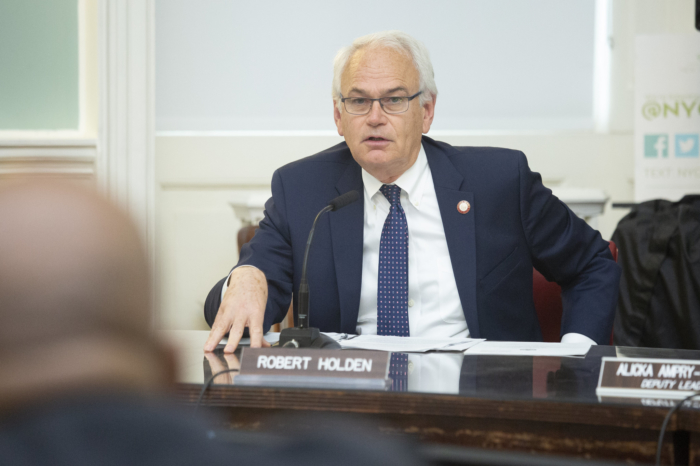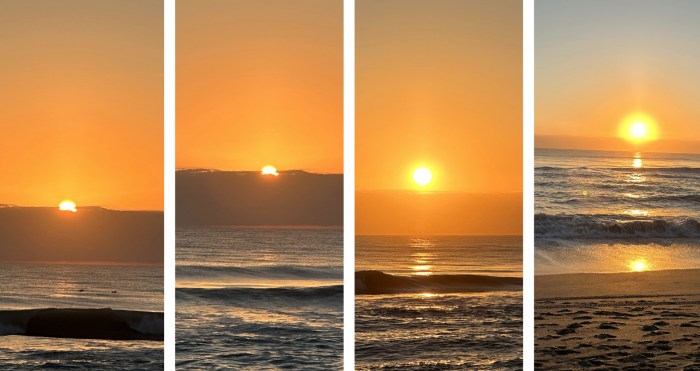By Greater Astoria Historical Society
Welcome to August 1935.
On Aug. 1, The Star reported that Gustav Lindenthal, the designer of the Hell Gate Bridges, had died at the age of 85 the previous evening at his home, the Lindens, in Metuchen, N.J.
Lindenthal was born in Austria and came to the United States in 1874. In 1904, Lindenthal, who oversaw the opening of the Williamsburg Bridge and the construction of the ongoing Manhattan Bridge and Queensboro Bridge projects, was chosen as consulting engineer and bridge architect by the Pennsylvania Railroad, which had just acquired the New York Connecting Railroad. The Connecting Railroad was only 10 miles long when he set about to extend it over the East River to link up to New England.
Bridging the Hell Gate was a problem that presented obstacles unprecedented in the history of engineering. The curved approach made impossible either a suspension or a cantilever bridge. Lindenthal, therefore, made the Hell Grade Bridge a braced steel arch with a span of 1,017 feet between the towers. When it opened in 1916, the Hell Gate Bridge was the longest steel-arch bridge in the world. It would hold that title until the Bayonne Bridge opened in 1931. The bridge today has the 17th longest main steel arch span in the world.
The city purchased the 50-acre Juniper Valley estate of murdered gambler Arnold Rothstein in Middle Village and began peat mining operations in a bog there. The city estimated that the bog contained 300,000 cubic yards of peat, worth about $315,000. Juniper Valley peat was said to be superior to English or other American varieties. It assayed 90 percent organic matter, whereas its competitors assayed 40 percent. Excavations were carried out using drag lines with buckets. Trenches 30 feet wide would be excavated and then filled in with ashes. Old timers remembered when huge juniper trees were clustered thickly over the area. The bog was estimated to be about 100,000 years old, and was thought to possibly contain some prehistoric bones and other relics.
On Aug. 5, a spectacular fire threatened the huge Pratt works of Socony-Vacuum Oil Company on Newtown Creek in Blissville. It was fortunately contained to four huge tanks holding almost 400,000 gallons of crude oil. Although the blaze was under control in less than an hour, it painted the sky a lurid red and threw off a terrific heat. An alarm was sounded at 1 a.m. and soon grew to three alarms. Fire companies from Hunters Point and Blissville were summoned and the firefighting staff at the works chipped in with chemical extinguishers. In total 12 engine companies, seven hook and ladder companies and two fireboats battled the fire after the third alarm was sounded.
WPA strikers were unsuccessful in attempting to hamper 28 Queens projects. One of the major projects, the paving and grading of Roosevelt Avenue in the Flushing business section, was proceeding despite strenuous efforts on the part of WPA strike leaders to tie up the project. The strikers were protesting the WPA “security” wage, which in New York was $93.50 per month or 78 cents an hour. AFL executive council recommended to President Roosevelt that construction work assigned to the WPA be moved to the Public Works Administration, which paid a wage of $1.50 per hour.
Former Queens resident Will Rogers and his pilot Wiley Post were killed in a plane crash near Point Barrow in Alaska. Rogers, well-known cowboy humorist, philosopher, court jester and serious adviser to U.S. presidents, was a former resident of both Forest Hills and Kew Gardens.
He first came to Queens in 1918, when he leased a house in Forest Hills for a year. While living there he aided a local charity by putting on a cowboy show that was a tremendous neighborhood success.
He later rented another house in Kew Gardens. Tragically, his car once accidentally struck and killed a grocery clerk on Northern Boulevard in Flushing.
Although the incident was an accident, Rogers investigated and found that the clerk was struggling to support a family of 12 children. He became a continuing contributor of clothing and money to the family.
For more information, call the Greater Astoria Historical Society at (718) 278-0700 or visit www.astor




























